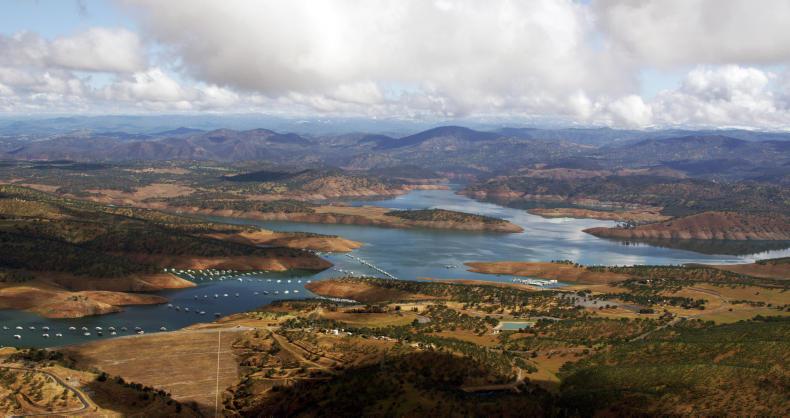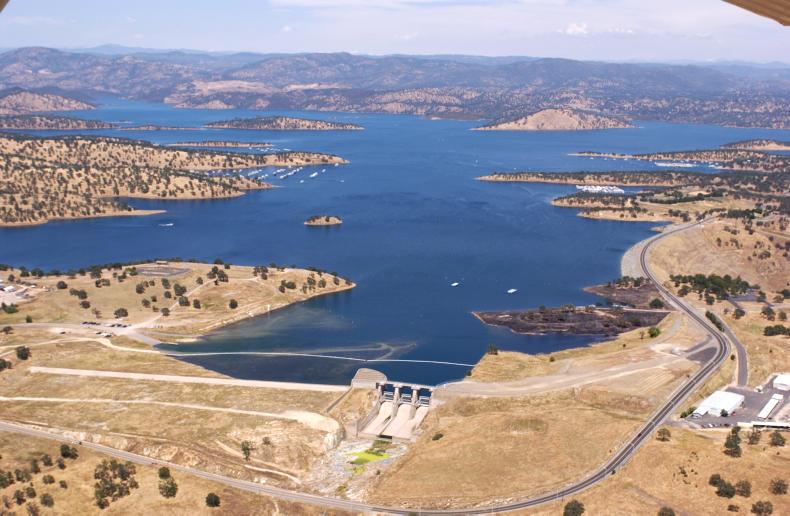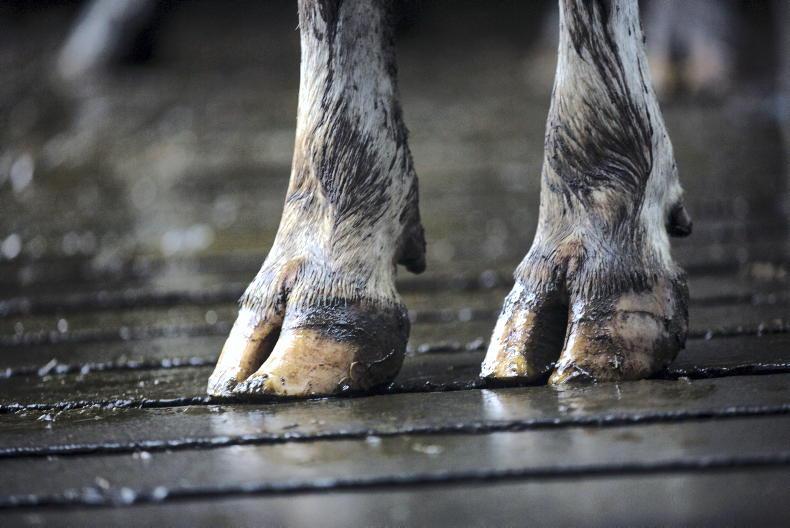California has a three-month rainy season and gets on average 23 inches of rain per year. It is a semi-arid state but one of five Mediterranean climates in the world, influenced by its mountain ranges where melting snow helps to supply reservoirs during the summer.
There are approximately 350 different types of crops in California and 75,000 farmers. The state produces 20% of the US’s dairy. Water is in strong demand. Some farmers have wells that are 2,500ft deep pumping water up from aquifers below, while others rely on reservoirs supplied by snow in the mountains to supply water for flood irrigation.
Listen to "The new gold rush - water" on Spreaker.
The further south you go in California, the more of an issue water becomes. In Bakersfield, farmers describe it as a “political drought” that has been ongoing for over 12 years. The liberal voice is strong in California and some water from north of Sacramento is being let out into the sea to save the minnow fish rather than being pumped further south to where rainfall per year is less than seven inches.
Around Bakersfield and Fresno, you will pass many signs on the highway calling for more water for agricultural production. One farm that the Irish Farmers Journal visited in that area has wells that are 2,500ft deep, using a 450 horsepower engine to pump up 1,670 gallons of water per minute. The more restrictions that are put in place for the pumping of freshwater down from the north, the more farmers pump up water to meet the demand from the crops they are growing.
However, fresh water also comes at a price and those prices are rising, with some paying $280/ac foot ($0.23/m3) for just 50% of the usual allocation. People bidding for water rights have been known to pay up to $2,000/ac foot ($1.62/m3), usually this happens if someone has a long-term crop such as almonds in the ground and they don’t want to let them die in a drought.

Don Pedro. \TID
Reservoir
The USDA just announced a $449m loan on 27 November for the Maxwell Water Intertie project in the Sacramento Valley of Northern California. The project will connect existing canals and reservoir systems and build a new 1.8m acre foot (2.2bn/m3) reservoir near Maxwell.
The Sustainable Groundwater Management Act has been passed, which means that landowners will no longer own the water beneath their land and water abstraction licences will need to be obtained. Californians are also debating the merits of flood irrigation. Some say that flooding the fields allows water to drain and replenish the water table.
Others say that it is inefficient and that drip irrigation improves yields. One scientist is working on a project to see if underground drip irrigation of alfalfa can be efficient.
“We have had drought-like conditions quite a bit in the last 10 to 15 years,” said Richard Matteis, administrator of the California Farm Bureau. “We have an elaborate system of irrigation projects in the state, we have both state projects and federal projects; a system of canals linked up to hundreds of reservoirs and dams around the state. We are in the process of building a couple of more right now. As my members put it, ‘if I don’t have the water I don’t need the labour, if I don’t have the water I don’t need better tax treatment’. You’ve got to have that first. So far, we continue to thrive.”
Flood irrigation
The Irish Farmers Journal visited Turlock Irrigation District (TID). The Turlock and Modesto valleys are both supplied by the Tuolomne river – each district runs its own water and power operations.
TID began in 1900 and supplies irrigation water to 150,000 acres of farm land. It uses a gravity-fed system along 250 miles of canals.
The average size of the farms it supplies is 20 acres, typically orchards or vegetable growers. There are 1,600 turnout points where customers can let water out to flood their fields. Over 40,000 acres supplied by the system are for almond production.
TID also generates power for 100,000 electric customers. As a publicly owned body, TID’s directors are voted in. Most of its directors are farmers.
TID has a 66% stake in Don Pedro reservoir, created in 1971 with 2m acre foot (2.6bn/m3) of water storage capacity. The company also owns the 50,000ac foot (61.7m/m3) Turlock lake and jointly built La Grange Dam with Modesto Irrigation District (MID). The dam raises the water to divert it into TID and MID’s canal systems.
At the start of the year, TID knows how many inches of water are available for the land and prices are set accordingly. Everyone pays $60/ac as the base price. After that, you pay volumetrically.
For example:
$2/acre for the first 24 inches.$3/ac for 24 to 48 inches.$15/ac for anything in excess of 48 inches.This is not expensive for water in California. TID regulates itself to make sure it has enough water to get through droughts. In Don Pedro reservoir, there is enough water to get though a three- to four-year drought. In the average water year, there are 48 inches available to everyone.
Planning and forecasting has become increasingly important. No longer are staff hiking up the mountains to assess the depth of snow pack and estimating water availability, now they are working with NASA which does flyovers to assess the amount of snow available.
TID has installed Rubicon water meters to assess precisely how much each customer is using and has also installed a gravity open channel system which allows water to be stored for re-use at the end of the canals.
Water releases used to be scheduled for when water was available. But now farmers are increasingly seeing slurry/lagoon water as a source of fertiliser for crops.
So water releases are scheduled to coincide with the release of slurry which is moved to neighbouring farms through pipes laid in the canal system.
Water and slurry are typically released in equal volumes, flooding the fields from three to six inches deep. That would equate to roughly 380kg of nitrogen/ha, based on an analysis of US dairy lagoon water.
TID believes that while this may cause some nitrates pollution issues in groundwater, that it is more sustainable for aquifers as their water supply is being replenished.
The State Water Board is seeking a 40% increase in downstream flows to help improve salmon stocks in the rivers. TID argues that this would have a devastating impact on farmers and has invested in studies that show salmon stocks would equally benefit from the removal of predators and habitat improvements.
California has a three-month rainy season and gets on average 23 inches of rain per year. It is a semi-arid state but one of five Mediterranean climates in the world, influenced by its mountain ranges where melting snow helps to supply reservoirs during the summer.
There are approximately 350 different types of crops in California and 75,000 farmers. The state produces 20% of the US’s dairy. Water is in strong demand. Some farmers have wells that are 2,500ft deep pumping water up from aquifers below, while others rely on reservoirs supplied by snow in the mountains to supply water for flood irrigation.
Listen to "The new gold rush - water" on Spreaker.
The further south you go in California, the more of an issue water becomes. In Bakersfield, farmers describe it as a “political drought” that has been ongoing for over 12 years. The liberal voice is strong in California and some water from north of Sacramento is being let out into the sea to save the minnow fish rather than being pumped further south to where rainfall per year is less than seven inches.
Around Bakersfield and Fresno, you will pass many signs on the highway calling for more water for agricultural production. One farm that the Irish Farmers Journal visited in that area has wells that are 2,500ft deep, using a 450 horsepower engine to pump up 1,670 gallons of water per minute. The more restrictions that are put in place for the pumping of freshwater down from the north, the more farmers pump up water to meet the demand from the crops they are growing.
However, fresh water also comes at a price and those prices are rising, with some paying $280/ac foot ($0.23/m3) for just 50% of the usual allocation. People bidding for water rights have been known to pay up to $2,000/ac foot ($1.62/m3), usually this happens if someone has a long-term crop such as almonds in the ground and they don’t want to let them die in a drought.

Don Pedro. \TID
Reservoir
The USDA just announced a $449m loan on 27 November for the Maxwell Water Intertie project in the Sacramento Valley of Northern California. The project will connect existing canals and reservoir systems and build a new 1.8m acre foot (2.2bn/m3) reservoir near Maxwell.
The Sustainable Groundwater Management Act has been passed, which means that landowners will no longer own the water beneath their land and water abstraction licences will need to be obtained. Californians are also debating the merits of flood irrigation. Some say that flooding the fields allows water to drain and replenish the water table.
Others say that it is inefficient and that drip irrigation improves yields. One scientist is working on a project to see if underground drip irrigation of alfalfa can be efficient.
“We have had drought-like conditions quite a bit in the last 10 to 15 years,” said Richard Matteis, administrator of the California Farm Bureau. “We have an elaborate system of irrigation projects in the state, we have both state projects and federal projects; a system of canals linked up to hundreds of reservoirs and dams around the state. We are in the process of building a couple of more right now. As my members put it, ‘if I don’t have the water I don’t need the labour, if I don’t have the water I don’t need better tax treatment’. You’ve got to have that first. So far, we continue to thrive.”
Flood irrigation
The Irish Farmers Journal visited Turlock Irrigation District (TID). The Turlock and Modesto valleys are both supplied by the Tuolomne river – each district runs its own water and power operations.
TID began in 1900 and supplies irrigation water to 150,000 acres of farm land. It uses a gravity-fed system along 250 miles of canals.
The average size of the farms it supplies is 20 acres, typically orchards or vegetable growers. There are 1,600 turnout points where customers can let water out to flood their fields. Over 40,000 acres supplied by the system are for almond production.
TID also generates power for 100,000 electric customers. As a publicly owned body, TID’s directors are voted in. Most of its directors are farmers.
TID has a 66% stake in Don Pedro reservoir, created in 1971 with 2m acre foot (2.6bn/m3) of water storage capacity. The company also owns the 50,000ac foot (61.7m/m3) Turlock lake and jointly built La Grange Dam with Modesto Irrigation District (MID). The dam raises the water to divert it into TID and MID’s canal systems.
At the start of the year, TID knows how many inches of water are available for the land and prices are set accordingly. Everyone pays $60/ac as the base price. After that, you pay volumetrically.
For example:
$2/acre for the first 24 inches.$3/ac for 24 to 48 inches.$15/ac for anything in excess of 48 inches.This is not expensive for water in California. TID regulates itself to make sure it has enough water to get through droughts. In Don Pedro reservoir, there is enough water to get though a three- to four-year drought. In the average water year, there are 48 inches available to everyone.
Planning and forecasting has become increasingly important. No longer are staff hiking up the mountains to assess the depth of snow pack and estimating water availability, now they are working with NASA which does flyovers to assess the amount of snow available.
TID has installed Rubicon water meters to assess precisely how much each customer is using and has also installed a gravity open channel system which allows water to be stored for re-use at the end of the canals.
Water releases used to be scheduled for when water was available. But now farmers are increasingly seeing slurry/lagoon water as a source of fertiliser for crops.
So water releases are scheduled to coincide with the release of slurry which is moved to neighbouring farms through pipes laid in the canal system.
Water and slurry are typically released in equal volumes, flooding the fields from three to six inches deep. That would equate to roughly 380kg of nitrogen/ha, based on an analysis of US dairy lagoon water.
TID believes that while this may cause some nitrates pollution issues in groundwater, that it is more sustainable for aquifers as their water supply is being replenished.
The State Water Board is seeking a 40% increase in downstream flows to help improve salmon stocks in the rivers. TID argues that this would have a devastating impact on farmers and has invested in studies that show salmon stocks would equally benefit from the removal of predators and habitat improvements.











SHARING OPTIONS